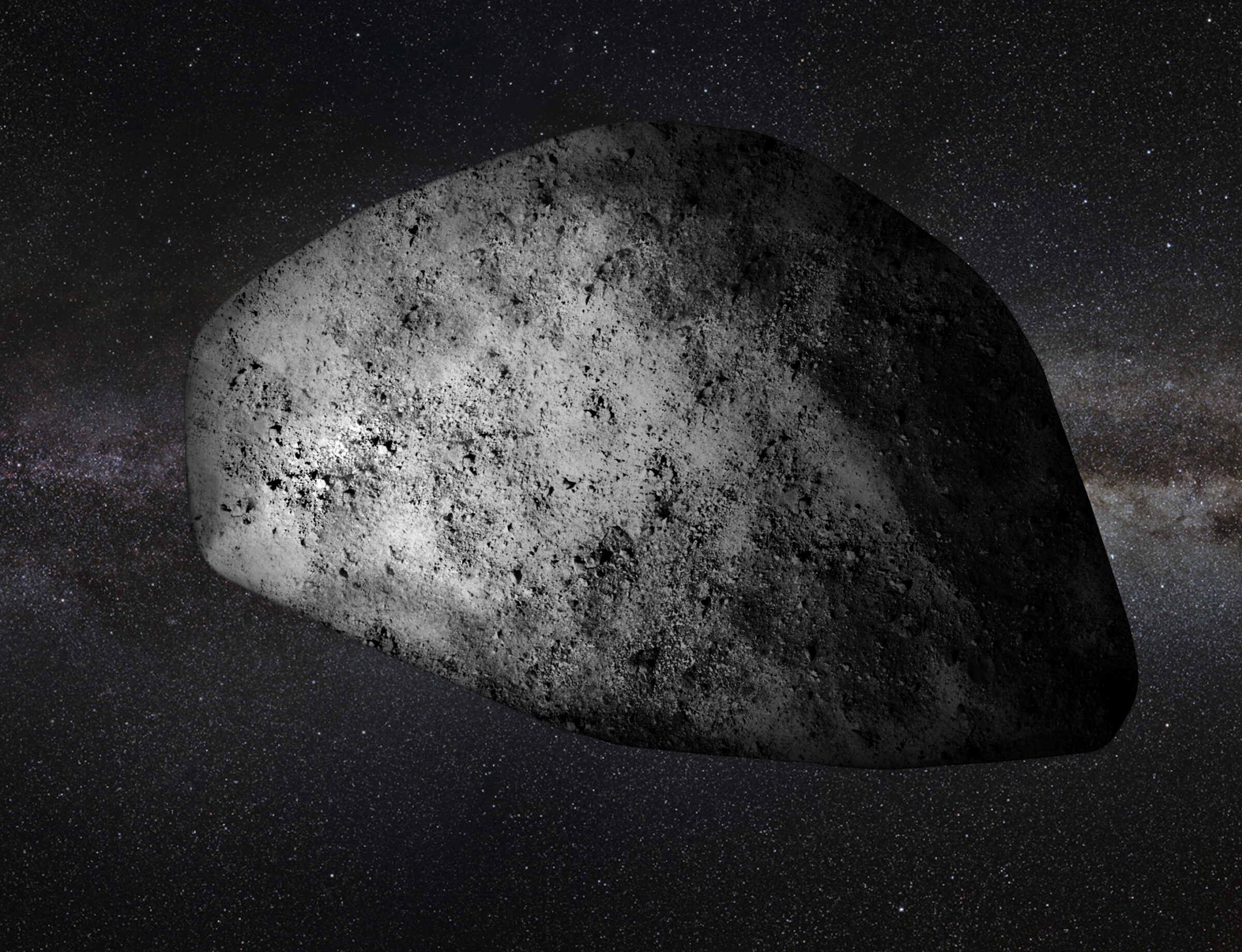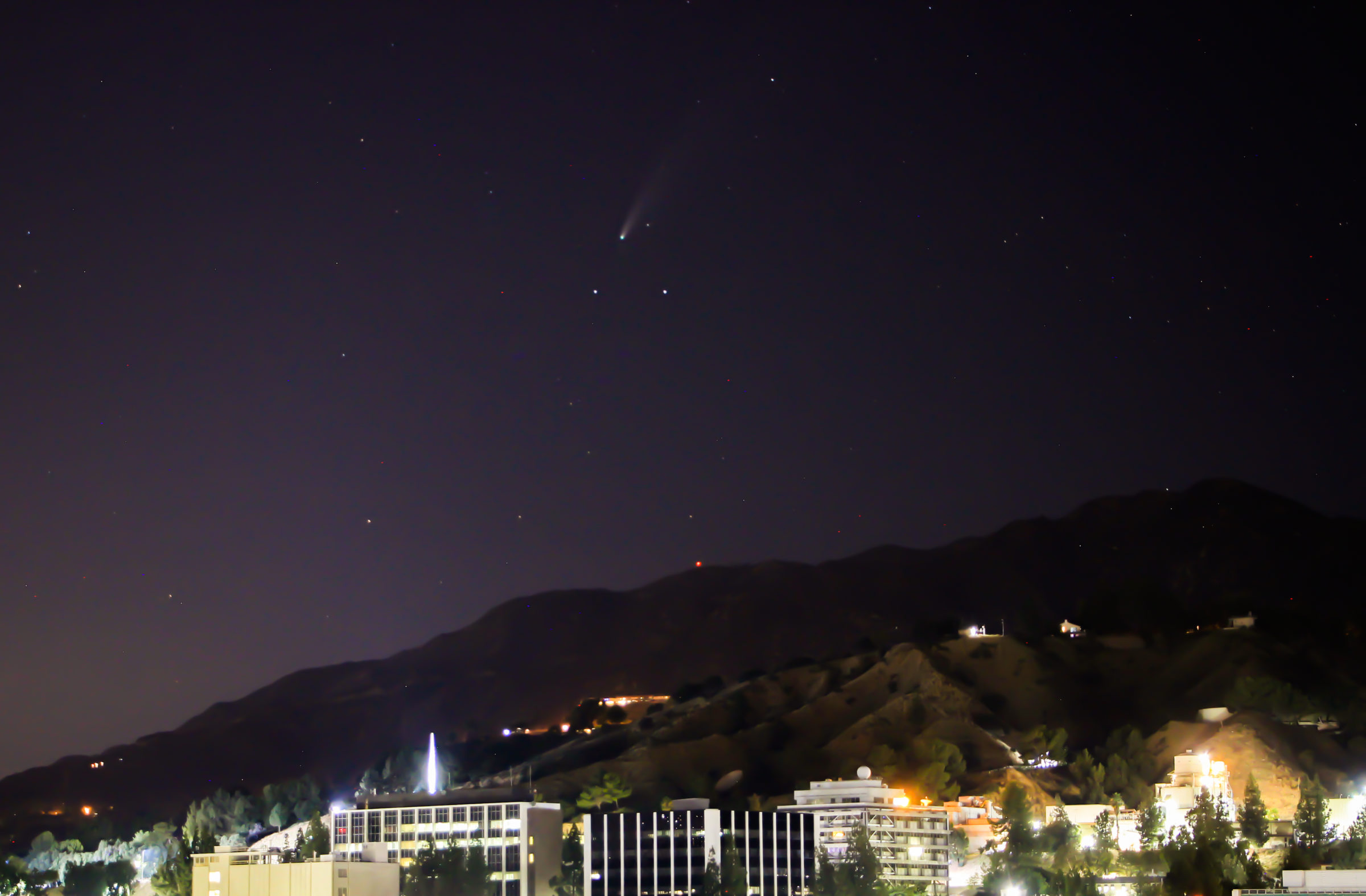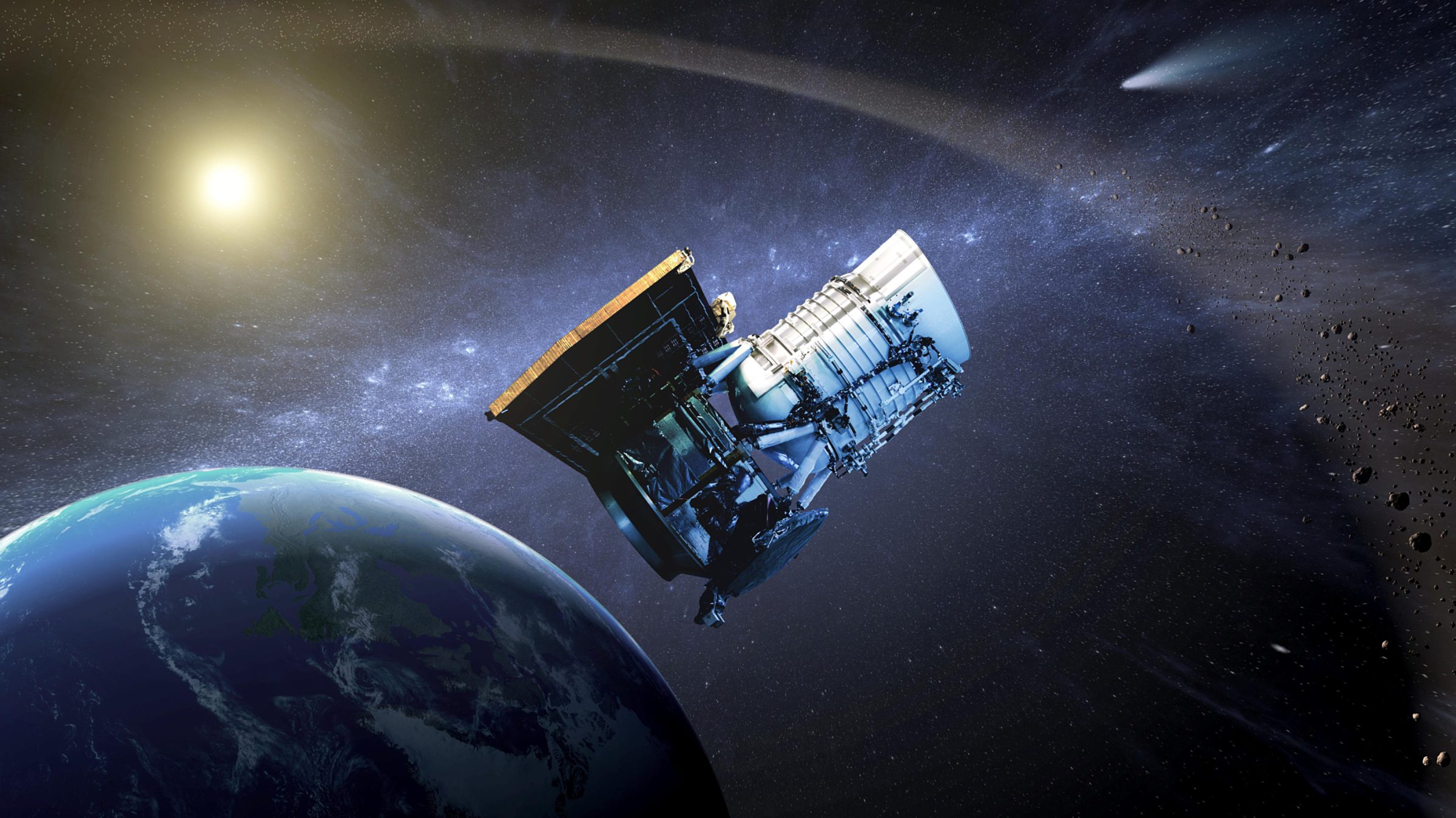NEOWISE, near-Earth asteroid tracker
Highlights
- NEOWISE was a NASA space telescope to detect, track, and study near-Earth asteroids.
- The threat from asteroid impacts is small but real — and preventable. Missions like NEOWISE are essential to help us understand how to stop dangerous asteroids.
- NEOWISE originally launched as the WISE astrophysics mission in 2009. Its replacement mission, NEO Surveyor, is scheduled to launch in 2028.
What is NEOWISE?
In order to stop asteroids from hitting Earth, we must find, track and study them. Because near-Earth asteroids reflect very little light, they can be hard to spot against the darkness of space. Fortunately, there's another way: asteroids get heated up by the Sun and radiate that heat back into space, making them glow in infrared light. Space telescopes — especially space telescopes that can see at infrared wavelengths — are ideal asteroid-hunting tools.
NEOWISE, NASA's Near-Earth Object Wide-field Infrared Survey Explorer, orbited the Earth and swept the sky looking for asteroids. By the time it was decommissioned in 2024, it had surveyed the entire sky 21 times, observing roughly 44,000 Solar System objects, including 3,000 near-Earth asteroids. These observations are helping us understand the different sizes and types of near-Earth asteroids, their trajectories through the Solar System, and what to do if we find one on course to hit Earth.

NEOWISE's past, present, and future
NEOWISE became dedicated to planetary defense, but it was not explicitly built for that purpose. The spacecraft originally launched as an astrophysics mission called WISE, the Wide-field Infrared Survey Explorer. WISE's job was to scan the sky for the nearest and coolest stars, the most luminous galaxies in the Universe, and asteroids.
The telescope and its four infrared detectors were kept chilled inside a tank with frozen hydrogen-filled walls to prevent WISE from detecting its own heat. The hydrogen supply ran out as expected in 2010, rendering two of WISE's four detectors useless. After a 30-month hibernation, NASA reactivated the spacecraft as NEOWISE in 2013 and assigned it a new mission to study near-Earth objects.
Atmospheric drag has slowly shifted NEOWISE's orbit to the point where it is unable to make observations without sunlight or reflected Earth light entering the telescope. It is expected to reenter Earth's atmosphere in 2025. A replacement telescope called NEO Surveyor is scheduled to launch in 2027.
How did NEOWISE work?
NEOWISE is a 40-centimeter (16-inch) diameter telescope with four infrared detectors, two of which are still functional without the spacecraft's supply of frozen hydrogen. NEOWISE is relatively small and compact, measuring less than 3 meters (10 feet) along its longest axis.
NEOWISE operated in low-Earth orbit at an altitude slightly higher than the International Space Station. It orbits pole-to-pole along our planet's terminator, the line that divides Earth between day and night. This orbit allows NEOWISE to stay in continual sunlight with its solar arrays facing the Sun and the telescope barrel pointing away into space. As atmospheric drag altered the spacecraft’s orbit, it eventually drifted into a position where it is unable to observe the sky without sunlight or reflected Earthlight entering the telescope. This effectively ended its mission, and NASA decommissioned the spacecraft in late 2024.
Comet NEOWISE or mission NEOWISE?
Before reactivation as NEOWISE, the WISE spacecraft made many new detections of black holes, brown dwarfs, and galaxies. One of its most famous non-asteroid discoveries was Comet C/2020 F3, also known as Comet C/2020 F3 (NEOWISE) or just Comet NEOWISE. This comet was the brightest to appear in the Northern Hemisphere since Comet Hale-Bopp more than 20 years earlier. At closest approach, Comet NEOWISE was bright enough in the night sky to be visible to the naked eye, and people around the world were able to see it.

Who was in charge of NEOWISE?
The NEOWISE mission was funded by NASA and managed by NASA’s Jet Propulsion Laboratory (JPL), while its scientific investigation was led by principal investigator Amy Mainzer, professor at the Department of Planetary Sciences and the Lunar and Planetary Laboratory at the University of Arizona. The NEOWISE project’s science data was processed at the Infrared Processing and Analysis Center (IPAC) at Caltech in Pasadena, California.
Academic resources
- Mainzer, A., Bauer, J., Grav, T., Masiero, J., Cutri, R. M., Dailey, J., Eisenhardt, P., McMillan, R. S., Wright, E., Walker, R., Jedicke, R., Spahr, T., Tholen, D., Alles, R., Beck, R., Brandenburg, H., Conrow, T., Evans, T., Fowler, J., … Wilkins, A. (2011). Preliminary results from NEOWISE: An enhancement to the wide-field Infrared survey explorer for solar system science. The Astrophysical Journal, 731(1), 53.
- Myhrvold, N. (2018). An empirical examination of WISE/NEOWISE asteroid analysis and results. Icarus, 314, 64–97.
Support missions like NEOWISE
Whether it's advocating, teaching, inspiring, or learning, you can do something for space, right now. Let's get to work.


 Explore Worlds
Explore Worlds Find Life
Find Life Defend Earth
Defend Earth



